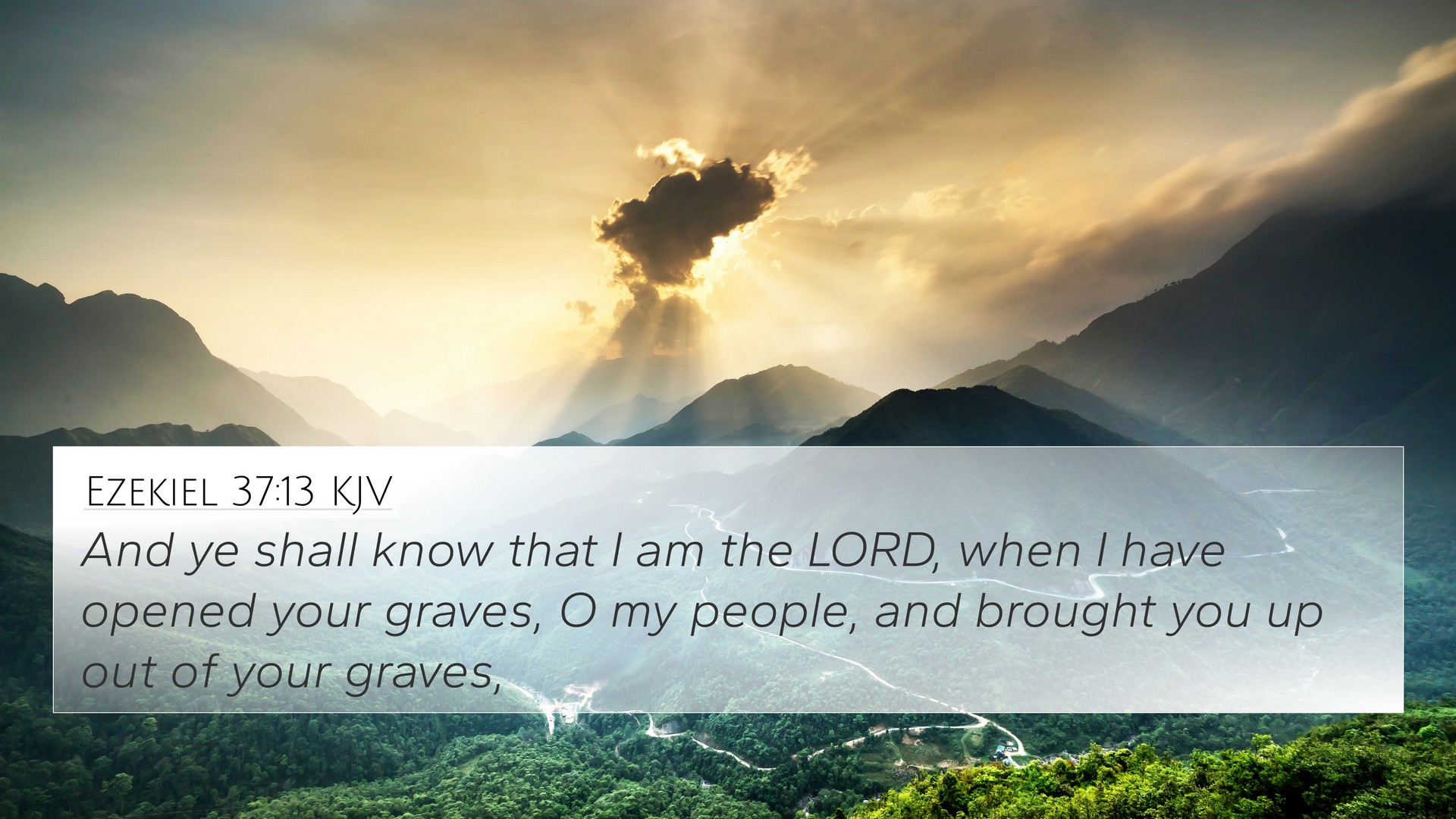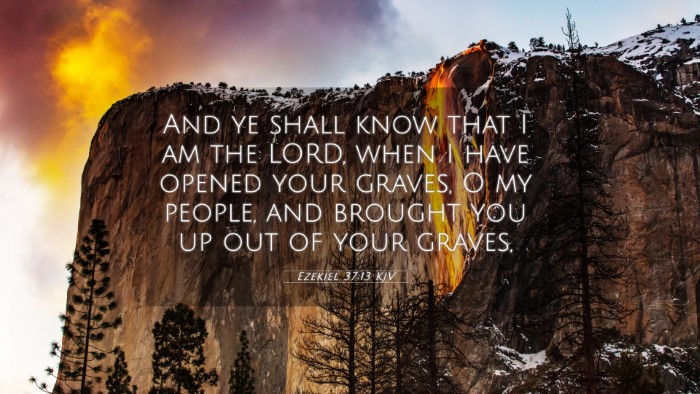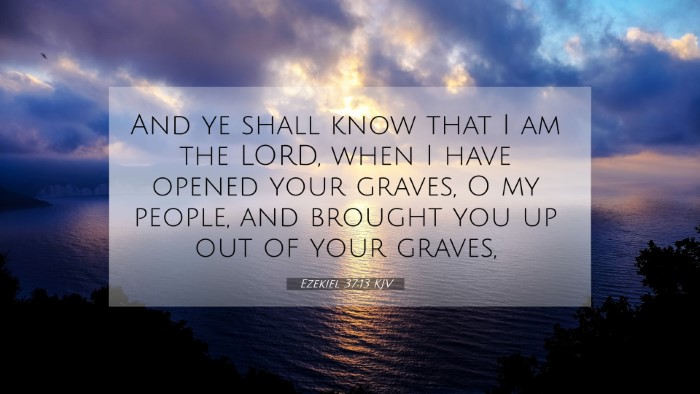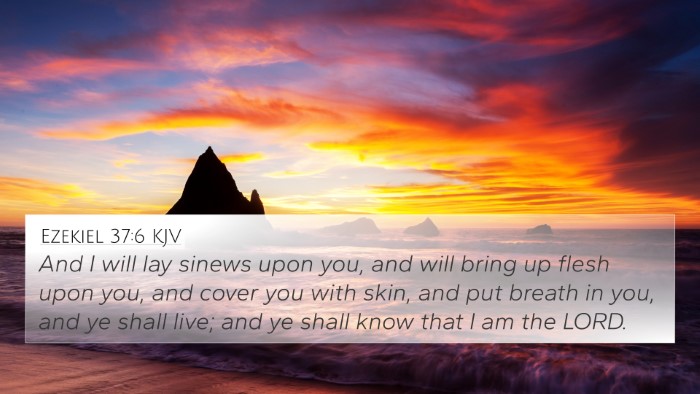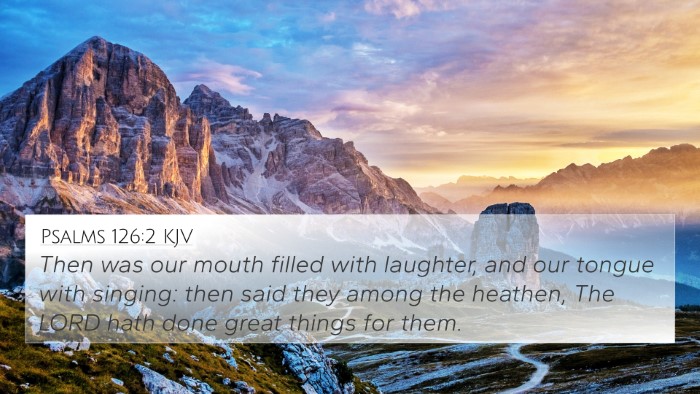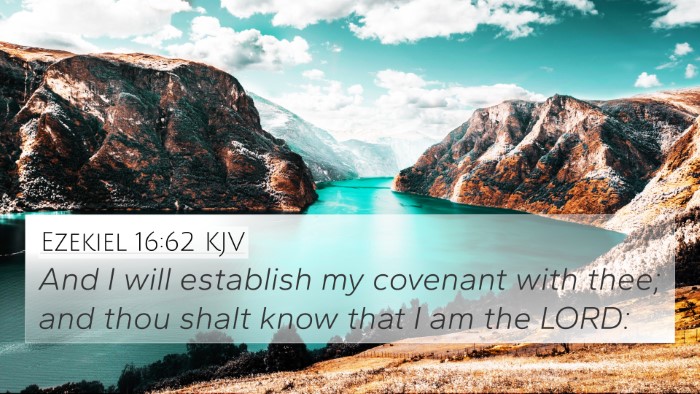In Ezekiel 37:13, the Lord declares the restoration of His people, emphasizing the significance of resurrection and hope. The verse reads, "And you shall know that I am the Lord, when I have opened your graves, O my people, and brought you up from your graves." This declaration serves not only as a promise of physical restoration for Israel but also symbolizes spiritual renewal. The profound implications of this verse can be understood through insights from various public domain commentaries.
Verse Meaning Summary
This verse is positioned within the well-known vision of the Valley of Dry Bones (Ezekiel 37:1-14), where God reveals to Ezekiel His power to revive that which is lifeless. Ezekiel, through divine revelation, is shown the condition of the nation of Israel—spiritually dead and without hope. The imagery of graves signifies not only physical death but also spiritual estrangement and disconnection from God.
Combined Insights from Commentaries
-
Matthew Henry:
Henry emphasizes that God's promise to revive His people is reflective of His eternal loyalty and covenant. He interprets the "opening of graves" as a metaphor for deliverance from sin and the restoration of a vibrant relationship between God and His people.
-
Albert Barnes:
Barnes draws attention to the certainty of God’s proclamations, noting that the acknowledgment of God's sovereignty is essential for understanding His actions. He elaborates that this revival signifies not only physical restoration but also an awakening to righteousness among the people.
-
Adam Clarke:
Clarke provides a historical context, indicating that this prophecy addresses the lamentations of the Israelites in exile. He highlights that God's intervention to bring them from their graves signifies His ultimate authority over life and death, renewing hope for the future of Israel.
Bible Cross-References
This verse is profoundly connected to various other scriptures that echo themes of restoration, resurrection, and divine intervention. Here are some notable cross-references:
- Isaiah 26:19: "Your dead shall live; their bodies shall rise." This prophecy also speaks of resurrection and hope.
- Romans 8:11: "If the Spirit of him who raised Jesus from the dead dwells in you, he who raised Christ Jesus from the dead will also give life to your mortal bodies." This New Testament verse connects the theme of resurrection with the Holy Spirit's work.
- John 5:28-29: Jesus' teaching on the resurrection draws a direct parallel to the dead coming forth, showcasing divine authority over life.
- Ephesians 2:1-6: Paul speaks about being made alive in Christ, reflecting the spiritual resurrection accompanied by grace.
- 1 Thessalonians 4:14: Offers hope of resurrection in Christ and the reunion of believers, mirroring the promise in Ezekiel.
- Psalm 30:3: "O Lord, you brought up my soul from Sheol; you restored me to life from among those who go down to the pit." This verse highlights God's restoring power.
- Hosea 6:2: "After two days he will revive us; on the third day he will raise us up." This prophetic declaration correlates with the theme of rejuvenation and hope after despair.
Thematic Connections
The themes in Ezekiel 37:13 resonate throughout Scripture, creating a tapestry of hope and restoration. The concept of resurrection is not limited to the physical realm but extends to spiritual rebirth, as seen in the New Testament's teachings on salvation. This continuity illustrates how the Old and New Testament engage in an inter-Biblical dialogue that enriches our understanding of God's redemptive plan.
Tools for Cross-Referencing
To fully grasp the depth of scripture, utilizing various tools for cross-referencing can significantly enrich study:
- Bible Concordances: Helps locate references to specific words and themes throughout the Bible.
- Bible Cross-Reference Guides: Lists related verses that provide thematic connections facilitating deeper study.
- Cross-Reference Systems: Various Bible translations incorporate cross-referencing systems highlighting interrelated verses.
- Comprehensive Bible Reference Resources: These materials can be indispensable for engaging in advanced scriptural analysis and thematic exploration.
User Intent and Verse Relationships
For those exploring how to find cross-references related to Ezekiel 37:13, it is beneficial to:
- Sift through related prophetic passages that articulate God's promises of renewal.
- Analyze the similarities between the resurrection themes in both Old and New Testaments to appreciate the unified message of hope.
Understanding the connections between scriptures can provide powerful insights into the continuity of God’s message and the nature of His promises.
Conclusion
Ezekiel 37:13 epitomizes the themes of hope and divine restoration present throughout the biblical narrative. By cross-referencing related verses and utilizing various Bible study tools, we can appreciate the rich tapestry of scripture that connects the past, present, and future promises of God. Engaging in this study not only enhances our biblical literacy but also deepens our spiritual understanding and relationship with the Almighty.
